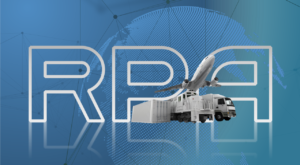Thanks to the novel coronavirus pandemic keeping millions of workers at home, robotic process automation (RPA) has been receiving a lot of hype. “Given our Corona-predicaments,” writes Jon Reed (@jonerp), a tech analyst and co-founder of Diginomica, “our obligation to wade through the RPA hype has jumped through the roof. Remote work and emergency conditions have pressed the need for all types of robots and workflow automation.”[1] He asks, “With the possible exception of blockchain, can you think of a technology with a more turbulent ride on the hype cycle than Robotic Process Automation?” He asks another biting question, “What are the exact use cases [for RPA] — and what are the pitfalls?” To find use cases for RPA, look for intersections where people, processes, and technology can fruitfully connect. To thrive in today’s business environment, decision-makers need to understand the symbiotic relationship between people, processes, and technology and RPA is simply one way to do that in appropriate situations. Although some critics may scratch their heads wondering how people link with automated processes, mounting evidence reveals that RPA generally assumes tedious tasks once performed by humans; however, it often doesn’t eliminate their jobs. In fact, RPA often makes jobs more interesting and fulfilling. Reed understands the importance of human/machine collaboration. He writes, “I care about the design — and proper integration with human escalation.” He also notes, “RPA can be effective — but it’s also a heck of a lot harder than the RPA brochure.”
What is RPA?
Former IBM executive Irving Wladawsky-Berger explains, “Robotic process automation, aims to improve the operational efficiency of office and service workers by automating tedious, repetitive tasks such as those associated with widely used horizontal processes in HR, finance and accounting, and IT services. It allows companies to automate processes at a fraction of the cost and time of classic software development. Rather than automating a process by redesigning the overall back-end application, RPA interfaces with the back-end system by performing the same actions that a human does via the application’s user interface. It thus creates software robots, or bots, that work alongside the humans.”[2] Bob Violino (@BobViolino) reports, “For a growing number of organizations, robotic process automation is becoming an entrenched part of automation strategies, as they look to gain efficiencies in a variety of business and data management functions.”[3]
How organizations think about RPA has begun to shift. Saugata Ghosh, a senior manager of digital services at Capgemini, explains, “Initially, everybody was after headcount reduction. Most people are telling us now that their focus is on reducing errors, improving compliance, or improving the customer experience. We’re certainly seeing maturity in this area and the focus has shifted from the tactical to more strategic and sustainable objectives.”[4] If you are struggling to see how RPA might be used, Versha Gupta provides several concrete examples.[5] Those examples include:
- Imitating human activities. If employees spend a great deal of their day completing routine tasks on their computers, RPA is likely a good fit to relieve them of those tasks. Gupta explains, “RPA works through bots and they can imitate your employee’s actions and can do all the operations with some applications and software.”
- Performing high-volume replicate tasks. Today’s business speed is computer speed. Handling big data transactions manually is a losing proposition in today’s business environment. Gupta notes, “RPA can retype any data from one system to another. It can do all the tasks like data-entry, copying, and pasting etc.” And it does it at computer speed.
- Integrating data. Most users would prefer getting the data they need via a user interface without having to interact with several different programs or systems. RPA can help achieve that goal. Gupta explains, “[RPA can] move data [between] different and bequest systems and connect them to the user consolidation system. You don’t need to evolve new data infrastructure.”
- Improving report accuracy. If your company uses standardized reports, RPA may be able to automatically generate such reports using templates and accessing the right data.
- Migrating data. Gupta writes, “Data migration is a tough task and can’t be done with traditional methods.” She goes on to note, “[RPA] automates data migration through networks. It migrates documents, spreadsheets and other important files.”
Those are only a few of the possibilities. As useful as RPA can be, Dick Weisinger insists it’s only a stepping-stone to the future. He writes, “Robotic Process Automation, has been hyped as a way to streamline workflows and make processes more efficient. But RPA is not about the future, it’s all about the past. RPA is computer automation software that sits on top of legacy applications. But, that’s not to say it’s not useful. RPA is intermediary glue that can turbocharge the use of existing software.”[6] The question is: “Intermediary glue” to what? What comes after RPA?
Beyond RPA
Digital Transformation Consultant Jim Sinur (@JimSinur) believes cognitive technologies hold the answer to what comes after RPA. He explains, “As AI advances to include right-brained activities such as judgment, particularly in context, RPA can make informed decisions based on leveraging the combination of AI & analytics. Deductions can be made after integrated information sources and knowledge worlds are run through advanced algorithms to take smarter action that considers multiple contexts.”[7] I call AI-enhanced RPA Cognitive Process Automation™ (CPA). Cognitive Process Automation goes beyond the accomplishment of routine tasks. CPA has the potential not only to automate, but to improve processes by dynamically processing and executing subtle decisions as if they were made by the best human expert. To be clear, not all programmable processes require advanced cognitive technologies. Simple, rule-based processes get along fine with RPA.
Staff writers at AnalyticsWeek call the next step “cognitive automation.” They explain, “Cognitive automation is based on software bringing intelligence to information-intensive processes. It is commonly associated with Robotic Process Automation as the conjunction between Artificial Intelligence and Cognitive Computing. By leveraging Artificial Intelligence (AI) technologies, cognitive automation extends and improves the range of actions that are typically correlated with RPA, providing advantages for cost savings and customer satisfaction as well as more benefits in terms of accuracy in complex business processes that involve the use of unstructured information.”[8] Often people use the terms artificial intelligence and machine synonymously. Machine learning is only one type of AI. The AnalyticsWeek staff notes, however, “Cognitive automation is not machine learning. Cognitive automation leverages different algorithms and technology approaches such as natural language processing, text analytics and data mining, semantic technology and machine learning.” The reason CPA is important for the future is because enterprises are going to have to deal with more and more unstructured data. The AnalyticsWeek staff explains, “The integration of different AI features with RPA helps organizations extend automation to more processes, making the most of not only structured data, but especially the growing volumes of unstructured information.”
Concluding thoughts
The AnalyticsWeek staff concludes, “Cognitive automation creates new efficiencies and improves the quality of business at the same time. As organizations in every industry are putting cognitive automation at the core of their digital and business transformation strategies, there has been an increasing interest in even more advanced capabilities and smart tools.” On the other hand, Reed believes some caution is advised. He explains, “I worry about the phrase ‘Robotic Process Automation,’ as I think it somehow implies that there is some type of advanced machine intelligence going on with these projects. The vast majority of the intelligence in today’s ‘intelligent process automation’ is being provided by the humans that design proper RPA scenarios.” He’s correct. Basic RPA is not about learning, it’s about executing set rules. CPA, on the other hand, adds learning into the mix; however, enterprises are only standing on the threshold of a new era in which CPA may play a more significant role.
Footnotes
[1] Jon Reed, “Robotic process automation rides the Coronavirus hype cycle – but where exactly are the use cases?” Diginomica, 4 May 2020.
[2] Irving Wladawsky-Berger, “RPA Provides a Lightweight, Agile Approach to Automation,” The Wall Street Journal, 10 August 2018.
[3] Bob Violino, “RPA market projected to grow by over 60% as firms look for new business efficiencies,” Information Management, 5 October 2018.
[4] Peter Gutierrez, “Making AI and robotics work for your business,” IoT Hub, 12 October 2016.
[5] Versha Gupta, “All You Need To Know About (RPA) Robotic Process Automation,” Hi-Techgazette, 27 August 2018.
[6] Dick Weisinger, “Robotic Process Automation: It’s Not the Future,” Formtek, 8 May 2020.
[7] Jim Sinur, “The Potential Of AI & RPA Together,” Forbes, 24 March 2020.
[8] Staff, “What is Cognitive Automation?” AnalyticsWeek, 7 may 2020.





